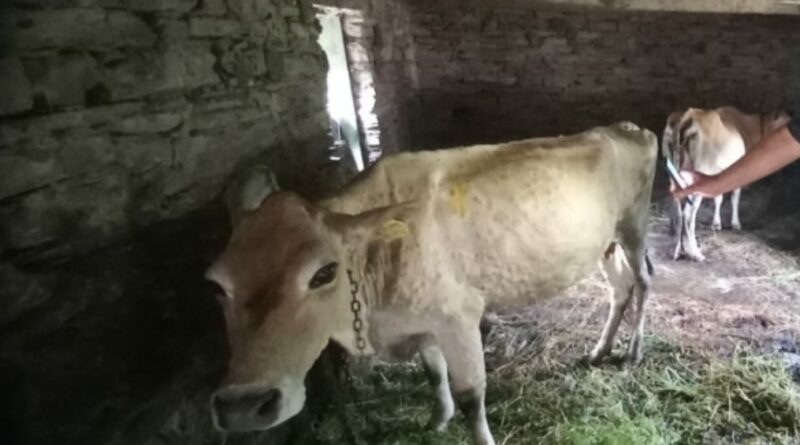Death toll of LSD mounts 7438 in Himachal, 9 district affected by outbreak
Two months have been passed since first cases were traced in part of Solan and Sirmaur district. Symptoms of Lumpy Skin Disease was traced in 108960 animals and it lead to death of 7438 cows and other cattle in the state. The Nodal officer of Himachal Pradesh Pushupalan Vibhag Dr Arun Sirkeck said that outbreak is still taking more animals under its control as on October 10 about 1147 new cases were traced and 143 cattle died. He said that cumulative affect mounts more than 1.08 lakh animals in the state. He said that under vaccination campaign 280752 doses of LSD vaccine were Administrated to animals in place where no outbreak affect animal. He said that monthly requirements of vaccine is around 3.20 lakh and department have stick pile of 72813 vaccines. He said that latest on 64822 animals were recovered and LSD us active in 36700 animals . Department started reporting of LSD from August 21, 2022 when out break continued to eight district with tally of 12062 cases and 233 deaths. Now it spread to nine district and leading to major economical loss to farmers inters of valuable livestock and productivity. He said that department had issued advisory to farmers since its out break. LSD(Lumpy Skin Disease) is an infectious viral disease of cattle and buffaloes caused by the Capripox virus of family Paxviridae . It is transmitted by arthropod vectors such as mosquitoes, biting flies and ticks. Symptoms may include lesions in mouth, pharynx and respiratory tract, emaciation, enlarged lymph nodes, oedema of limbs, reduction in milk production, abortion, infertility and sometimes, death. Although infected animals often recover within a period of 2-3 weeks , there is reduction in milk yield in lactating cattle for several weeks . The morbidity rate is around 10–20 per cent and mortality rate is around 1–5 per cent. Referral of Samples of affected animals should be referred to ICAR – NIHSAD , Bhopal for laboratory testing . The milk of infected animals should not be used and mixed in the milk of healthy animals. Door to door awareness and vaccination drive should be undertaken with the help of NGOs, village leaders, youths, cooperatives, school teachers and other stakeholders. Milk collection centers should educate the farmers at the time of milk collection and ensure healthy milk collection without mixing of the milk of infected animals. Dr Sirkeck said that after infections vaccination is not considered viable alternative but animal should treat for secondary infection and control of symptoms of LSD.



